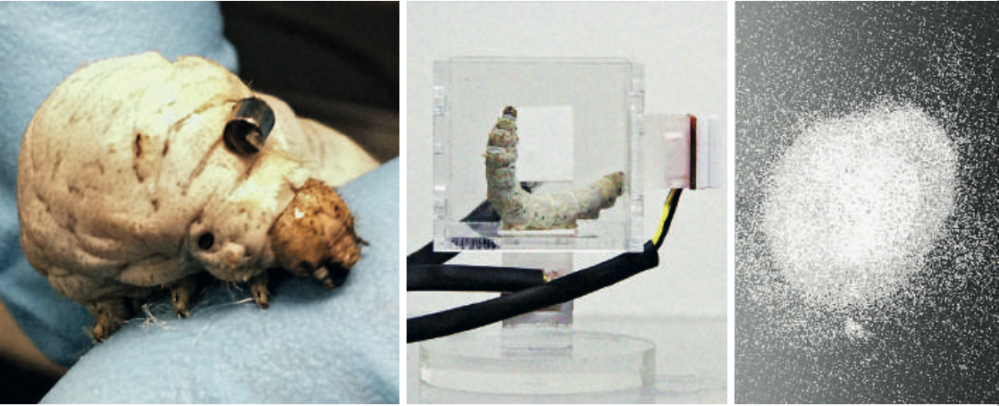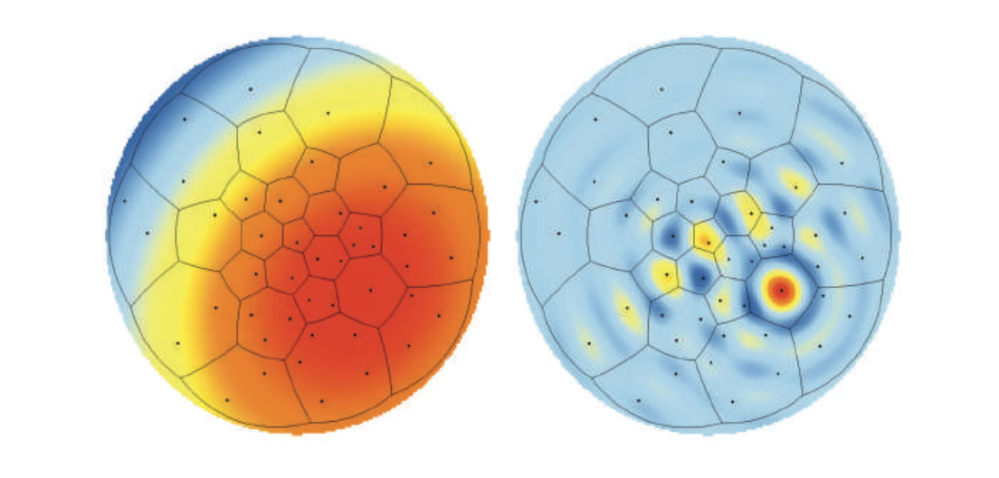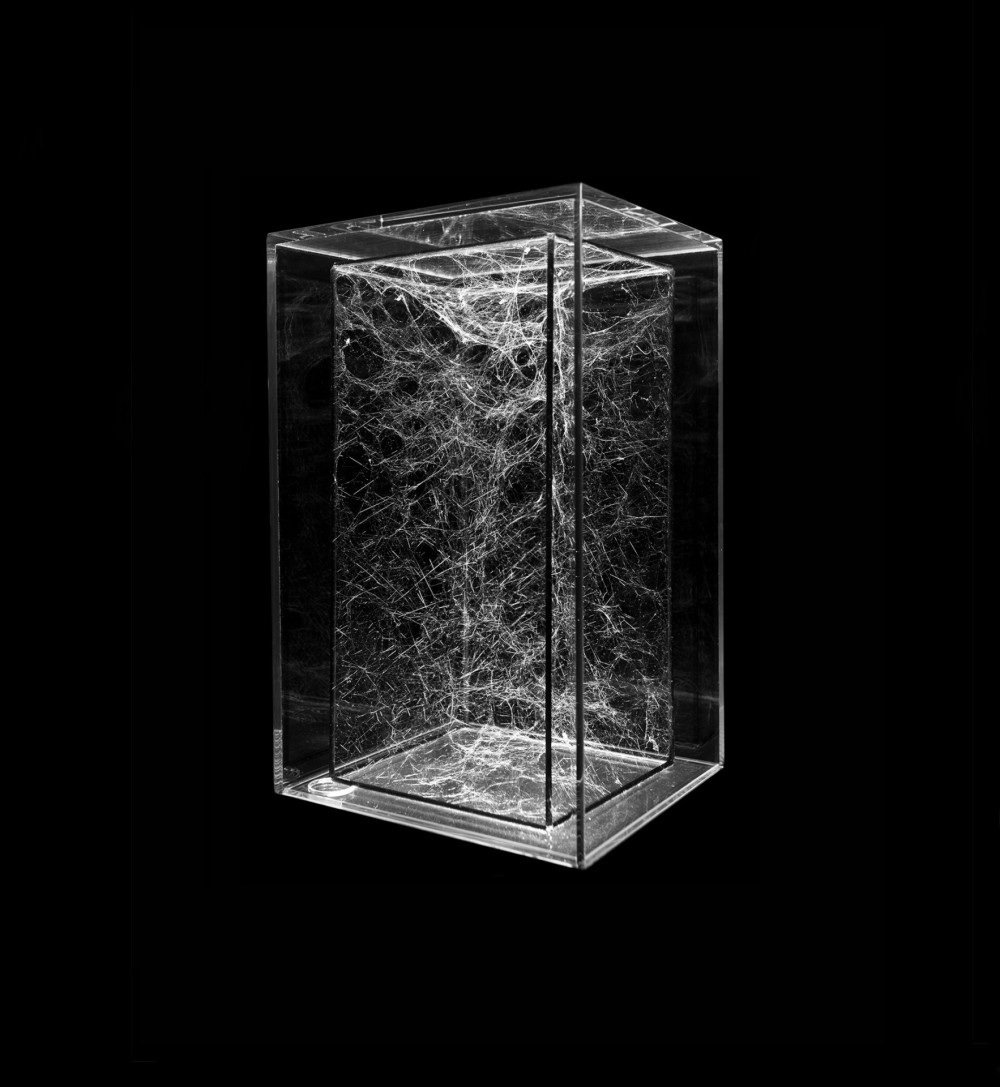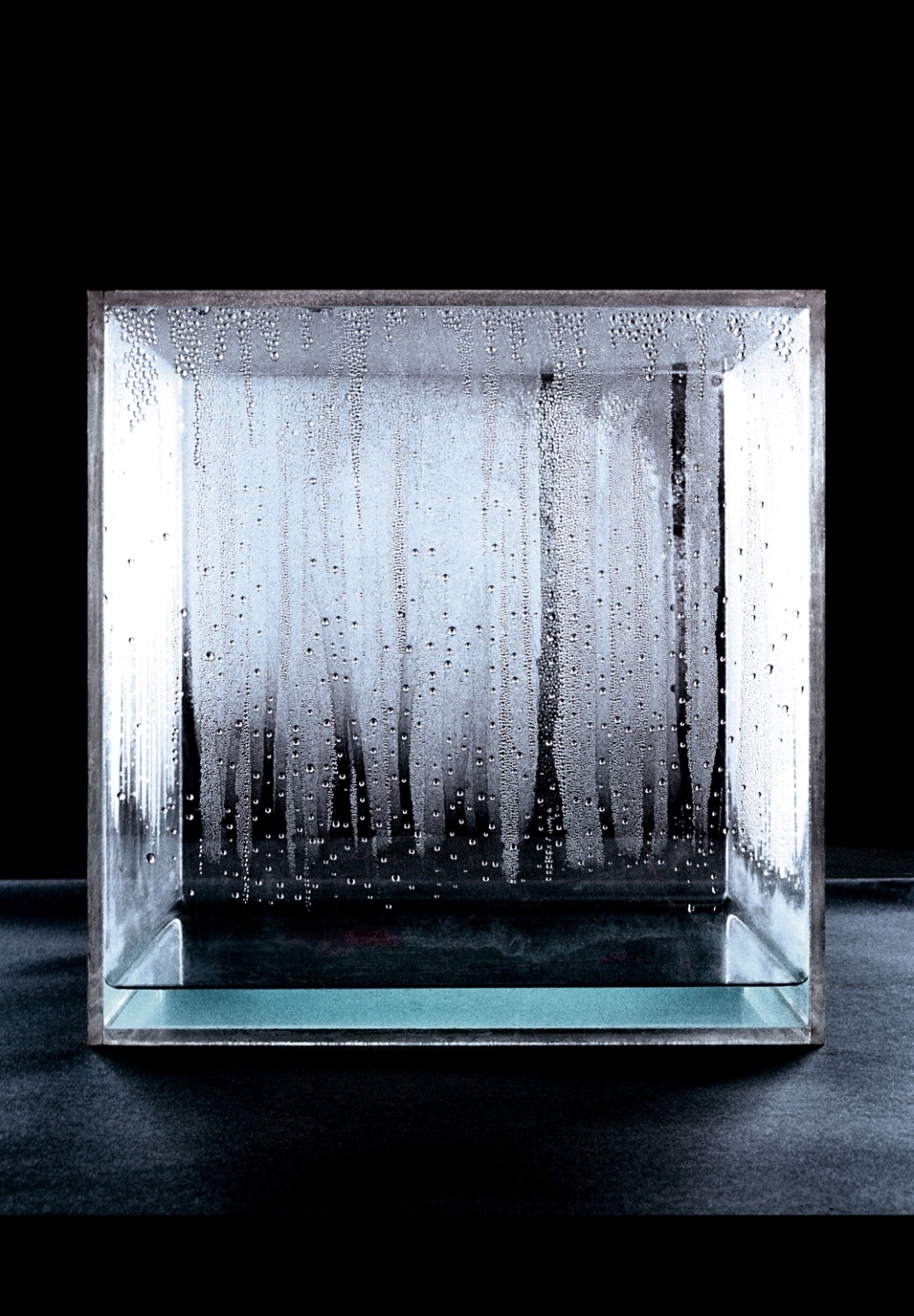A. Silk Pavilion by Mediated Matter Group, MIT Research Labs
 Perspective view of the Silk Pavilion and its complementary basic research exhibit. (Photo: Steven Keating.)
Perspective view of the Silk Pavilion and its complementary basic research exhibit. (Photo: Steven Keating.)
The Silk Pavilion is a project by MIT Research Labs examining the behaviour of silkworms – through tracking their notion, the team was able to design a dome that would complement the building behaviour of the silkworms. The overall goal was to “explore the possibility of merging digital and biological fabrication to deliver a holistic and sustainable design approach in the production of non-woven fibre-based constructions”. A parametric environment was developed from the complex constraints of natural silkworm behaviour, enabling ‘continuous iteration’ and prototyping and form-finding of the pavilion.
 a) Silkworm with attached magnet for motion tracking. b) A Bombyx mori silk- worm positioned within a magnetometer testing rig. c) Point cloud visualisation based on magnetometer testing rig data.
a) Silkworm with attached magnet for motion tracking. b) A Bombyx mori silk- worm positioned within a magnetometer testing rig. c) Point cloud visualisation based on magnetometer testing rig data.

a) Computational projection of panelled dome: solar mapping. b) Computational projection of panelled dome: aperture distribution mapping.
This process was made possible by RhinoCommon and its Grasshopper plug-in that enables computational design, and I personally am excited to learn and master these processes to execute other iterations influenced by natural code. While I and very intrigued by the collaboration between the artists and the silkworm, I can’t help but to think about notions of labor and exploitation – while the silkworms follow their own natural sense of duty and survival, the artists redirect their efforts to a controlled human order… and it feels exploitative. Perhaps this is something to consider in my projects.
B. Hybrid Webs by Tomás Saraceno
 Tomás Saraceno. “Social .. Quasi Social .. Solitary .. Spiders … On Hybrid Cosmic Webs”, at Esther Schipper Art Gallery, Berlin, Germany, 2012
Tomás Saraceno. “Social .. Quasi Social .. Solitary .. Spiders … On Hybrid Cosmic Webs”, at Esther Schipper Art Gallery, Berlin, Germany, 2012
© Photography by Andrea Rossetti, 2012
Tomás Saraceno’s Hybrid Web provides a window into ‘spider code’, where he displays 2 spiders of different species creating their own webs in the transparent cube. While the actual code and computation of the web patterning is by the spiders themselves, Saraceno sets a parameter: he chooses A. 2 spiders, and B. the dimensions of the space and C. the type of spiders. With that, he creates generative sculpture and patterns in an experimental way, allowing the spiders’ webs to steal the focus of the work.
C. Condensation Cube by Hans Haacke
 Condensation Cube, 1965, Plexiglass and Water, Hans Haacke. Image from MACBA.
Condensation Cube, 1965, Plexiglass and Water, Hans Haacke. Image from MACBA.
They took the formula of a natural process and translate it into coding language to create a controlled natural process. I’m not sure what the goal of the research was, I kind of assume that the goal of the research was to to create a product of the desired shape/design while using natural’s process that carries advantages that manmade structures do not have. You mentioned that the process is exploitative, and I agree. While it is an amazing collaboration process between the silk worms and technology, I question the ethics behind it. Not necessarily during this process, it makes me think more of the future possibilities and demands of the process that would raise the demand of the silkworms as well.
LikeLike
Hi Dionne,
If you are interested in the ‘biological computing’ of other organisms being translated into structures and systems in the human world, the behavior of slime mold could be worth looking at as well. https://www.wired.com/2010/01/slime-mold-grows-network-just-like-tokyo-rail-system/
LikeLike